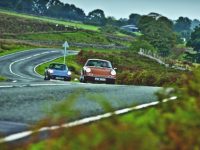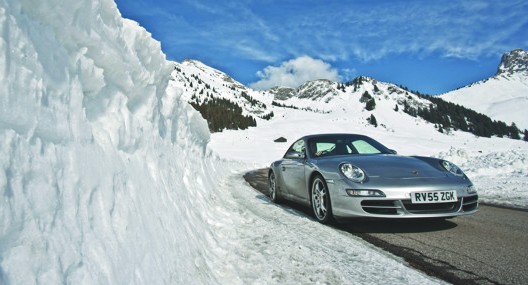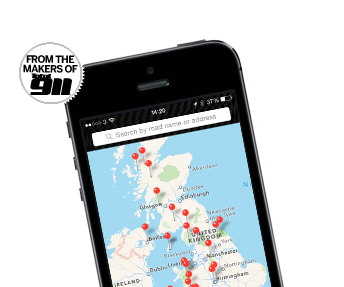Little St Bernard Pass, France
This Great Road was initially published in issue 80 of Total 911.
In March 2006, I found myself in the Alps, in a fuelled-up 997 Carrera 4S and with two days to myself. Naturally, I’d looked at maps, and read about this small road joining Italy and France, so, I punched it in the PCM, and headed out to drive it.
The Little St Bernard Pass – or Col Du Petit St Bernard to be strictly accurate – links the Aosta Valley on the Italian side of Mont Blanc to the French side of the mountain. As you might expect, the road has two different numbers; the French call it D1090 and the Italians the SS26.
The road follows the main alpine watershed, and at its highest, rises to 2,188m above sea level, through some of Europe’s most interesting and significant landscape.
There’s another pass nearby – the Grand St Bernard Pass – which you may know, as it was used in the iconic opening scenes of the Italian Job, where the Lamborghini Miura drives to meet its abrupt end.
There’s plenty of history to stop and take in, too. A 72-metre-wide stone circle rumoured to date back to the Iron Age is dissected by the Tarmac, and so arduous is the climb, the Tour de France has included the pass in its route on numerous occasions. With an average gradient of 5.1 per cent, it’s a test of both man and machine.
Either direction is driveable, although it is worth noting that the Italian side has the most severe hairpins – you may prefer to drive up the slope or down. I chose up, to catch the views into the French descent. There are fewer barriers on the French side, which in the main has a more open aspect. Compared to many passes this one has less in the way of switchbacks every few hundred metres, as per Stelvio.
Length of drive: 33 miles Points of interest: Chamonix and area – winter sports, Mont Blanc Food and accommodation: Hotel Edelweiss, Courmayeur
Auberge de la Maison, Courmeyeur Mont Blanc
+39 0165 869811
+39 0165 841590
Here the road is a little more open and bends hold more of a winding, climbing nature. It’s not a road to go flat out between each apex, though there are well-sighted sections in the middle near the old border post. Frankly, the scenery is so spectacular that it’s not the place to go for a maximum attack run – not to mention that at times the bends require plenty of concentration, even in a 911.
My trip, though, didn’t quite go to plan. Turning off after the Mont Blanc tunnel on the Italian side, the start of the route was spectacular. With the snow-streamed peak appearing now and then, the landscape is jaw-dropping. Slowly rising up and up, the hairpins began to get more frequent, the snow getting deeper as the elevation increased. What began as barrier-high, soon reached the height of the car either side of the road after only a handful of kilometres.
Soon, the road was just a gap carved between narrowing walls of ice. Then the inevitable happened; a wall of snow, with no break to the distant slopes of the mountains. Yes, the road was closed. I had to turn back.
Due to its altitude the road can be closed from October to June, so my February trip was patently pushing my luck. For a taste of a real Alpine Pass without heavy traffic, nor too many hairpins, I’d recommend it, though. Despite only managing part of it, it was still a great drive in a 911.
More from Total 911

Daytona 24 Hours: fifth position for best placed Porsche

Brecon Beacons, Wales, UK

Thought of the day: a cam for all seasons




Comments (1)